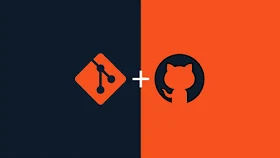What is Source Code Management?
Source Code Management (SCM) is the practice of tracking and managing changes to code throughout its lifecycle. It helps teams collaborate effectively on software projects by providing version control and workflow management.
What is Git?
Git is a distributed version control system designed to handle everything from small to very large projects with speed and efficiency. It allows multiple developers to work on the same codebase simultaneously and tracks changes made to files.
What is GitHub?
GitHub is a web-based platform built around Git, providing hosting for software development version control using Git. It adds additional features like collaboration tools, code review, issue tracking, and project management.
What is the Difference Between Git and GitHub?
Git is the version control system itself, while GitHub is a hosting service for Git repositories. Git is used for local repository management and version control, whereas GitHub is used for remote repository hosting and collaboration.
How to Create a Repository?
To create a repository in GitHub:
- Log in to your GitHub account.
- Click on the "+" icon in the upper right corner and select "New repository".
- Follow the prompts to name your repository, add a description, and configure other options.
- Click "Create repository" to finalize.
What is a README?
A README is a file that contains information about other files in a directory or archive of computer software. It is usually presented to people browsing the repository, such as potential contributors, and serves as an introduction to the software.
How to Write Good READMEs?
Good READMEs typically include:
- A brief description of the project.
- Installation instructions.
- Usage examples or instructions.
- Contributing guidelines.
- License information.
How to Commit?
To commit changes using Git:
git add
Commit changes with a descriptive message using:
git commit -m "Your message"
How to Write Helpful Commit Messages?
Helpful commit messages are concise yet descriptive, summarizing the changes made and why they were made. They should provide enough context for other collaborators to understand the purpose of the commit.
How to Push Code?
To push code to a remote repository:
- Link your local repository to the remote repository using
.git remote add origin <repository URL> - Push changes to the remote repository using
(or the appropriate branch).git push -u origin main
How to Pull Updates?
To pull updates from a remote repository:
- Fetch changes from the remote repository using
git fetch origin - Merge changes into your local branch using
(or the appropriate branch).git merge origin/main
How to Create a Branch?
To create and switch to a new branch in Git:
- Create a new branch using
git checkout -b new-branch-name.
How to Merge Branches?
To merge branches in Git:
- Switch to the branch you want to merge changes into using:
git checkout main - Merge changes from another branch using
git merge other-branch-name
How to Work as Collaborators on a Project?
Collaborating on a project using Git and GitHub involves:
- Cloning the repository locally.
- Creating branches for new features or fixes.
- Pushing changes to remote branches for review.
- Discussing changes through pull requests and code reviews.
- Maintaining a clean and organized repository structure.
Which Files Should and Which Files Should Not Appear in Your Repo?
Files that should appear in your repository include source code files, configuration files, documentation (like READMEs), and build scripts. Files that should not appear include sensitive data (like passwords or API keys), generated files (like compiled binaries or dependencies), and temporary files (like logs).


No comments:
Post a Comment